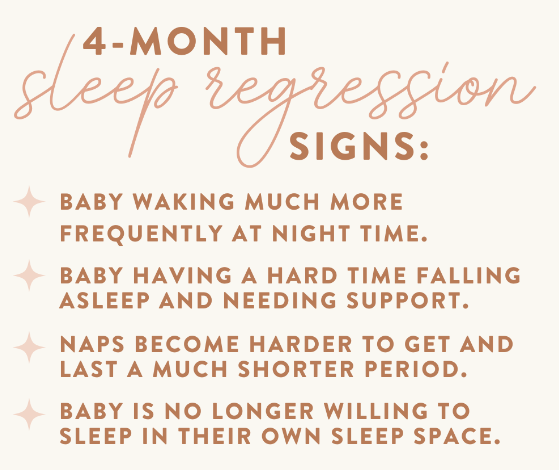BOURSESSENEGAL – The 4 month sleep regression can be a challenging phase for both babies and their parents. This period typically occurs around four months of age and can disrupt previously established sleep patterns. In this blog post, we will explore the causes, signs, and strategies to help you navigate this tricky stage. Whether you’re a first-time parent or experienced, understanding this regression can provide clarity and comfort during this transition.
What is the 4 Month Sleep Regression?
Defining Sleep Regression
Sleep regression refers to a temporary disruption in a baby’s sleep patterns. During the 4 month sleep regression, many infants experience difficulties falling asleep, staying asleep, or both. This phase can last anywhere from two to six weeks, though it varies for each child.
Why Does It Happen?
This regression often occurs as babies transition from newborn sleep patterns to more mature sleep cycles. Around four months, your baby’s brain undergoes significant development. They start to experience lighter sleep stages, leading to more frequent awakenings. This change is completely normal, but it can leave parents feeling exhausted.
Recognizing the Signs of 4 Month Sleep Regression
Common Symptoms to Watch For
Understanding the signs of the 4 month sleep regression can help you identify if your baby is going through this phase. Here are some common symptoms:
- Increased Night Wakings: Your baby may wake up more frequently during the night, even if they previously slept well.
- Shorter Naps: Naps may become inconsistent, and your baby might resist sleeping during the day.
- Fussiness Before Bed: You may notice increased fussiness or crying before bedtime, making it harder to establish a calming bedtime routine.
- Difficulty Self-Soothing: Babies who once self-soothed may struggle to fall back asleep on their own.
Understanding Your Baby’s Behavior
During this time, it’s crucial to remember that your baby’s behavior is a response to developmental changes. They are learning new skills, such as rolling over or grasping objects. While this is exciting, it can also lead to overstimulation, making it harder for them to settle down.
Strategies to Manage the 4 Month Sleep Regression
Establishing a Consistent Bedtime Routine
Creating a soothing bedtime routine can help signal to your baby that it’s time to sleep. This routine might include:
- Bath Time: A warm bath can be relaxing and helps prepare your baby for sleep.
- Reading a Book: Calming stories can create a peaceful environment.
- Gentle Rocking: Holding your baby and gently rocking them can provide comfort.
Encourage Self-Soothing Techniques
Teaching your baby to self-soothe can be beneficial during the 4 month sleep regression. Here are some techniques to try:
- Allow Short Cries: Letting your baby cry for a few minutes before intervening can encourage them to learn how to fall asleep independently.
- Use a Comfort Object: A soft blanket or stuffed animal can provide reassurance during the night.
Optimize the Sleep Environment
Creating a conducive sleep environment can significantly impact your baby’s ability to sleep well. Consider these tips:
- Dim the Lights: A dark room helps signal that it’s time for sleep.
- White Noise: A white noise machine can mask outside sounds and create a calming atmosphere.
- Comfortable Temperature: Ensure the room is at a comfortable temperature to help your baby sleep soundly.
Addressing Sleep Challenges
Dealing with Frequent Night Wakings
If your baby wakes frequently during the night, it’s essential to stay calm and patient. Here are a few tips:
- Wait Before Responding: Give your baby a few minutes to see if they can settle back down on their own.
- Check Basic Needs: Make sure your baby is not hungry, wet, or uncomfortable before intervening.
Coping with Short Naps
If your baby is taking shorter naps, consider the following:
- Watch for Sleep Cues: Look for signs that your baby is tired, such as yawning or rubbing their eyes, and put them down for a nap before they become overtired.
- Limit Stimulation: Reduce stimulating activities before nap time to help your baby relax.
When to Seek Help
Signs That May Require Professional Advice
While the 4 month sleep regression is usually temporary, there are instances when you might want to consult a pediatrician. Consider seeking help if:
- Your baby seems unusually lethargic or irritable.
- You notice drastic changes in eating or other behaviors.
- Sleep disruptions continue well beyond the typical regression period.
Resources for Support
If you find yourself overwhelmed, remember that support is available. Parenting groups, online forums, and books can provide insights and encouragement. Don’t hesitate to reach out to fellow parents or professionals who can share their experiences and strategies.
Conclusion
Navigating the 4 month sleep regression can be challenging, but understanding it can empower you as a parent. By recognizing the signs, establishing routines, and using effective strategies, you can help your baby transition through this phase. Remember, every baby is unique, and what works for one may not work for another. Stay patient and adaptable as you support your little one through this developmental milestone.
Final Thoughts
This phase, while tough, is a sign of your baby’s growth. Embrace this journey, and remember that you are not alone. Many parents have walked this path and emerged on the other side, ready for the next adventures of parenthood. With love, patience, and understanding, you can navigate the challenges of the 4 month sleep regression and help your baby find their sleep rhythm once again.
REFERENCE : https://www.health.com/



